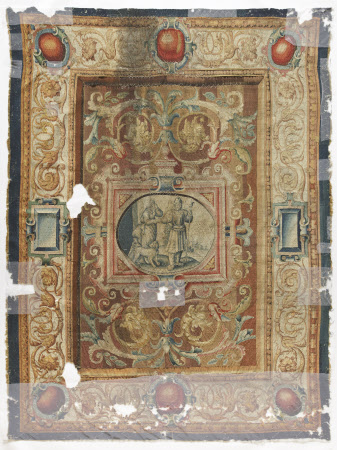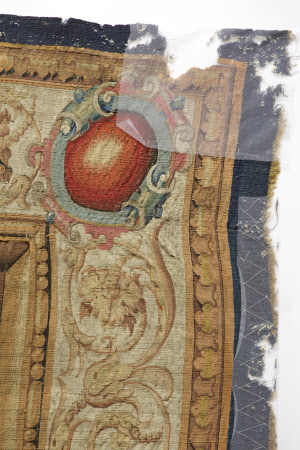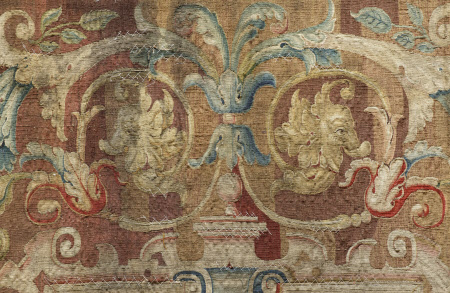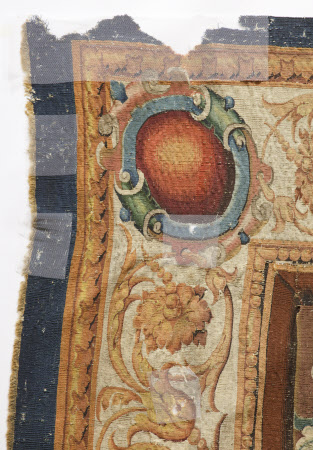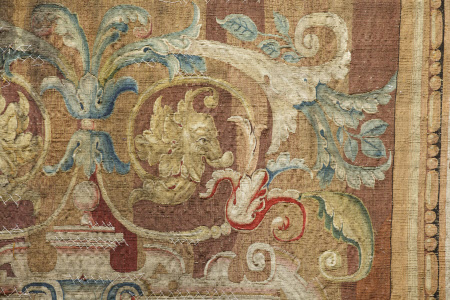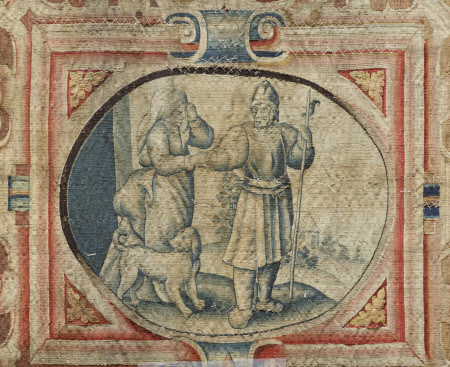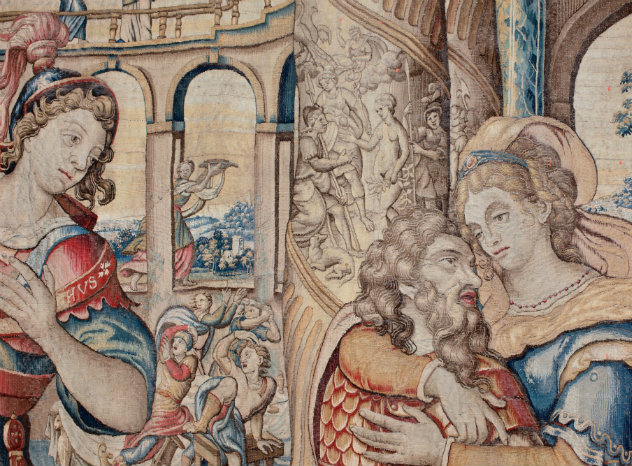Grotesque with Soldier's Farewell
probably Mortlake Tapestry Manufactory
Category
Tapestries
Date
1619 - 1624
Materials
Tapestry, wool, 7 warps per cm
Measurements
3470 x 2570 mm
Order this imageCollection
Ham House, Surrey
NT 1140552
Summary
Tapestry, wool, 7 warps per cm, Grotesque with Soldier's Farewell, English, possibly Mortlake, c. 1619-1624. The main field of the tapestry consists of vigorous scrollwork of acanthus leaves and masks in red, blue, green and gold on a reddish brown ground. In the centre there is an oval grisaille genre scene of a soldier bidding farewell to a weeping peasant woman and a dog, within a rectangular frame set within scrolled strapwork. The wide borders have more delicate scrolling acanthus leaves or rinceaux in gold on an off-white ground, and blank cartouches in red and blue at each corner and at the centre of each side. The tapestry was once part of a set of six, the remaining five were sold Christie's, London, 27 April 1948, lots 78-80. One of the tapestries sold was woven with the arms of Sir Francis Crane (c. 1579-1636), the owner and first director of the Mortlake tapestry workshop, and the other four those of the courtier and politician Sir Richard Weston, 1st Earl of Portland (bap. 1577-d. 1635). Based on the coats of arms and elements of the designs, especially the cartouches in the borders, the tapestry can be attributed to the Mortlake workshop. It was probably made before Francis Cleyn arrived as designer to Mortlake in 1625. For more information see Wyld forthcoming. (Helen Wyld, 2011)
Makers and roles
probably Mortlake Tapestry Manufactory , workshop
References
Wyld, 2013 a: Helen Wyld, 'Seventeenth-century Tapestries at Ham House', in Christopher Rowell (ed.), Ham House: 400 Years of Collecting and Patronage, New Haven and London 2013, pp. 178-93
